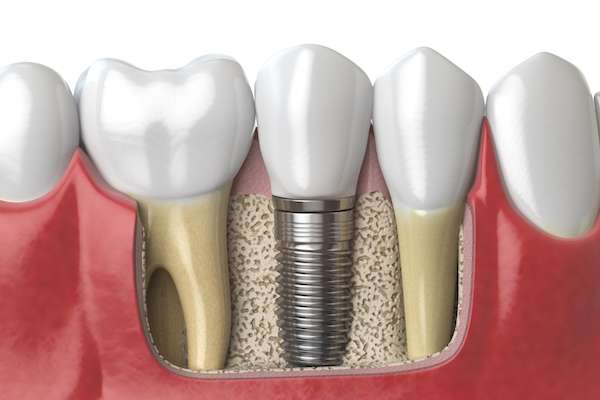Dental Implants for Replacing Missing Teeth
 People with large gaps from missing teeth can often benefit greatly from dental implants. A dentist may suggest implants for patients who seem to struggle with personal appearance, speaking, or chewing and eating. While there are other avenues to pursue for replacing missing teeth, this type of dental procedure can work well for patients who do not want regular dentures or have had little luck with other artificial replacements, such as bridges.
People with large gaps from missing teeth can often benefit greatly from dental implants. A dentist may suggest implants for patients who seem to struggle with personal appearance, speaking, or chewing and eating. While there are other avenues to pursue for replacing missing teeth, this type of dental procedure can work well for patients who do not want regular dentures or have had little luck with other artificial replacements, such as bridges.
Reasons to undergo surgery
Dental implants can do more for a patient than recreate a beautiful smile. Impacts have been shown psychologically and physically in those who receive these subtle dental appliances. Knowing how an implant can positively affect someone’s everyday living can encourage patients to discuss implant options with a dentist. Here are the top reasons patients invest in the procedure.
Improved oral health
When teeth are lost, the jawbone can steadily deteriorate over time without the extra support provided by teeth roots. Patients may struggle with daily functions, such as chewing and biting, which can impact essential dietary needs. By filling in those gaps, the jawbone can grow healthier and patients can eat properly.
Improved smile
Many people with missing teeth take care to smile with closed lips. They may also have difficulty speaking, which can lead to embarrassment and social shyness. Artificial teeth are matched to blend in smoothly with natural teeth, allowing patients to smile and speak without hindrances.
Lasting durability
Most denture and bridge dental options need to be replaced within the decade — sometimes sooner — requiring patients to visit the dentist more frequently. Dental implants are built to last a lifetime and seldom need replacing. So long as patients maintain good oral hygiene habits, even removable options have great durability and lifespans.
The surgery process
An implant comes in three parts. The first is a metal post that is screwed into a person’s jawbone below the gumline. A middle piece called an abutment is attached to the post just on top of the gums. The third and final piece is the crown that acts as an artificial tooth. From start to finish, the procedure of securing these three parts can take months due to necessary healing times in between surgery and placement appointments. Some steps in the process can be skipped or combined in one visit depending on the individual’s choice of implant.
Implant options
The procedure may take more time depending on the implant a patient receives. There are three main types:
- Single implant: A patient receives one implant to replace a single missing tooth
- Implant-supported bridge: A dental bridge is secured by implants for patients missing two or more consecutive teeth in a row
- Implant-supported dentures: A full denture is attached to several implants when most teeth are missing
Conclusion
Discussing these options and the procedures involved with each can help patients decide on whether receiving dental implants is the right choice. Never hesitate to bring up issues of missing teeth with a dentist.
Request an appointment or call Gledhill Dental at 509-800-8410 for an appointment in our Kennewick office.
Related Posts
A dental implants is widely considered the tooth replacement solution that most closely resembles a natural tooth in durability, functionality, and appearance. However, like natural teeth, dental implants require diligent and consistent care to ensure longevity. Incorporating proper dental implant care into your oral hygiene routine can prevent complications and keep your smile healthy for…
Full mouth dental implants are an option that many patients choose when they need to replace their missing teeth. Our smile is the first impression we have when meeting a new person. We all want that impression to be warm and welcoming. When our smile is somewhat imperfect, we tend to lack confidence and feel…
Dental implant surgery can bring back your stunning smile. Tooth loss makes eating, speaking, and even smiling difficult. It affects a person’s self-esteem. Getting implants can make you feel good about yourself again. Here are the details on how a dental implant can help you smile confidently again.People who use removable restorations often complain about…


